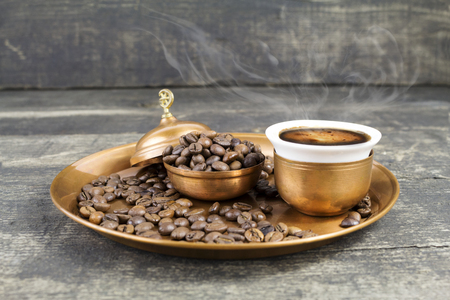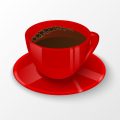Introduction to Coffee Art in India
Coffee art, once considered an exclusively Western trend, is now making a remarkable impact across the Indian subcontinent. The journey of coffee in India began with the beloved filter kaapi in the South, enjoyed in every household from Bengaluru to Chennai. Today, this traditional brew is sharing space with modern café creations that capture the spirit of urban India. As coffee culture blooms in cities like Mumbai, Delhi, and Hyderabad, baristas are experimenting with latte art and intricate coffee designs inspired by local motifs and festival themes. This evolution reflects not only Indias growing appreciation for specialty coffee but also its knack for blending global trends with regional flavours and traditions. Whether its a frothy peacock design for Diwali or a kolam-inspired pattern during Pongal, coffee art is quickly becoming an expressive part of Indian celebrations and daily life.
2. Coffee and Indian Festivals: An Emerging Trend
In recent years, the integration of coffee art into traditional Indian festivals has become an exciting new trend, especially in urban settings. Coffee, which was once considered a beverage for casual get-togethers or business meetings, now finds its place among Diwali diyas, Holi colours, and elaborate wedding feasts. This shift reflects not only the growing popularity of coffee culture among young Indians but also how global influences blend seamlessly with desi traditions.
Coffee art, with its intricate patterns and personalized messages, adds a modern twist to age-old celebrations. For instance, during Diwali, cafes in cities like Mumbai and Bengaluru serve lattes adorned with rangoli-inspired designs or festive greetings in English and regional languages. During Holi, baristas experiment with vibrant, food-safe colours in latte foam to echo the festival’s spirit of joy and unity. At weddings, coffee bars are increasingly common, where guests can enjoy custom-made cappuccinos featuring the bride and groom’s initials or mehendi motifs.
This fusion is not just about taste; it’s about experience. Coffee stations at events become interactive spaces where guests can engage with baristas, request specific designs, and share their creations on social media using popular hashtags like #IndianCoffeeArt or #FestiveBrew. The following table highlights how coffee art is being integrated into some major Indian festivals:
| Festival | Coffee Art Style | Popular Motifs/Designs | Cultural Significance |
|---|---|---|---|
| Diwali | Rangoli Latte Art | Diyas, Om symbols, Lotus flowers | Symbolizes prosperity and new beginnings |
| Holi | Coloured Foam Art | Splashes of vibrant colours, abstract patterns | Celebrates joy and togetherness |
| Weddings | Personalized Cappuccino Art | Bride & Groom initials, Mehendi designs, Hearts | Adds a personal touch to celebrations |
The presence of coffee art at these festivities signifies a blending of the old and new—where tradition meets innovation. It reflects how urban India is embracing global trends while still celebrating its unique cultural identity.

3. Showcasing Indian Motifs in Latte Art
Coffee art is evolving beyond its Western roots and blending beautifully with Indian heritage, especially during the country’s vibrant festivals. Baristas across India are taking inspiration from traditional designs like rangoli, intricate mehendi patterns, and cultural symbols such as the lotus, diya lamps, or peacocks, to create unique latte art that resonates deeply with festival-goers.
Rangoli Patterns on Coffee Foam
Rangoli is a cherished art form in India, especially during festivals like Diwali and Pongal. The swirling floral and geometric shapes traditionally made with coloured powders now find their way onto the creamy surface of a cappuccino. Using etching tools or milk foam manipulation, skilled baristas recreate symmetrical rangoli patterns, transforming each cup into a celebration of colour and festivity—without the mess!
Cultural Symbols Brewed with Pride
During major festivals such as Holi or Navratri, it’s not uncommon to find coffee cups adorned with motifs like Ganesha, Om signs, diyas, and even mango leaves. These symbols are not just decorative; they carry deep significance for Indian customers, turning an everyday beverage into a meaningful ritual. For instance, a chai latte topped with a stylized diya motif can instantly evoke the spirit of Diwali in every sip.
Bridging Tradition and Modernity
This creative fusion of coffee art and Indian tradition is more than an aesthetic trend—it is a way for cafes to connect emotionally with their patrons. Whether it’s through intricate paisley designs for Eid or peacock feathers for South Indian harvest festivals, latte art becomes a canvas for cultural storytelling. As more Indian cafes embrace this approach, coffee art continues to bridge generations and traditions, making every festival season even more special one cup at a time.
4. Role of Coffee Artists During Festive Seasons
India’s festive calendar is dotted with grand celebrations such as Diwali, Holi, Eid, and Christmas, where people gather in large numbers to cherish traditions and create memories. In recent years, the demand for skilled baristas and coffee artists has seen a remarkable surge during these festivities. This trend can be attributed to the growing café culture in urban India and an increasing appreciation for specialty coffee experiences among the youth and middle class.
During major festivals, both popular cafes and pop-up events invite experienced coffee artists to enhance the celebratory spirit. These professionals showcase their creativity by crafting intricate latte art inspired by traditional motifs—think rangoli patterns, diyas, or even henna designs on cappuccinos! Their presence not only elevates the overall experience but also attracts more footfall as guests are eager to witness live demonstrations and personalised cups featuring festive themes.
| Festival | Popular Coffee Art Themes | Demand for Coffee Artists |
|---|---|---|
| Diwali | Diyas, Rangoli Patterns, Fireworks | Very High (Cafes & Corporate Events) |
| Holi | Colourful Swirls, Gulal Designs | High (Outdoor Pop-ups & Family Gatherings) |
| Eid | Crescent Moon, Stars, Arabic Calligraphy | Moderate to High (Community Cafés) |
| Christmas/New Year | Santa Claus, Christmas Trees, Snowflakes | Very High (Urban Cafes & Hotels) |
This rising demand has created new opportunities for talented baristas, who often collaborate with event planners to design signature beverages and interactive workshops. For young Indian coffee artists, the festive season is not just about serving drinks—it’s a platform to express their creativity and connect with the community while contributing to the vibrant tapestry of Indian celebrations.
5. Community Engagement & Social Media Influence
In the vibrant landscape of Indian festivals, coffee art has become more than just a creative expression—it is now a catalyst for community engagement, amplified by the widespread influence of social media. Across India, platforms like Instagram, Facebook, and WhatsApp have become virtual stages where baristas and coffee lovers alike showcase their festival-inspired latte art, sharing everything from intricate rangoli patterns to motifs of deities crafted with steamed milk and espresso. The hashtags #FestivalLatteArt and #IndianCoffeeCulture are trending among urban youth and café communities, creating a digital ripple effect that transcends regional boundaries.
The interplay between coffee art and social media has fostered a sense of unity and pride during major celebrations such as Diwali, Holi, Eid, and Christmas. Coffee shops in Mumbai, Bengaluru, Delhi, and even smaller towns host latte art competitions themed around these festivals, inviting locals to participate or vote online. This interactive approach not only brings together people from diverse backgrounds but also encourages them to share their creations and experiences on their personal feeds. As a result, festival-themed coffee art becomes a vehicle for storytelling—each cup narrates a unique cultural tale that resonates with followers across the country.
Moreover, influencers and specialty coffee brands often collaborate during festive seasons to curate limited-edition menu items featuring traditional Indian flavors—think saffron-infused cappuccinos or rose-pistachio lattes adorned with festive designs. These collaborations receive significant traction online, with customers eagerly posting photos and reviews using regional phrases like “Bahut accha design hai!” or “Mast lag raha hai!” Such organic promotion not only boosts local business but also strengthens the bond between the café culture and Indian traditions.
Through this seamless blend of artistry and technology, coffee art is transforming from a niche craft into an integral element of festival celebrations throughout India. It bridges generational gaps, encourages cultural exchange, and highlights how modern trends can coexist harmoniously with age-old customs—all while fostering a vibrant sense of community both offline and online.
6. Conclusion: Blending Tradition with Modernity
Coffee art in India has evolved into more than just a visual treat; it stands as a unique expression of the nation’s vibrant culture, especially during festivals. As Indian festivals are deeply rooted in tradition and community bonding, coffee art offers a fresh way to celebrate these values while embracing the evolving café culture. During festivals like Diwali, Holi, or Eid, latte art often features motifs such as diyas, rangoli patterns, or crescent moons, merging ancestral symbols with contemporary barista skills. This blend reflects how today’s youth and urban professionals connect with their heritage through new mediums in social spaces. Café owners across Mumbai, Delhi, and Bengaluru have recognised this trend, curating festive menus and coffee art workshops that encourage patrons to share their stories over a cup of beautifully crafted coffee. In this way, coffee art becomes a bridge—combining the warmth of age-old Indian hospitality with the flair of global café trends. Ultimately, it celebrates both the pride of Indian traditions and the dynamism of modern lifestyles, making every festival gathering richer and more memorable.

